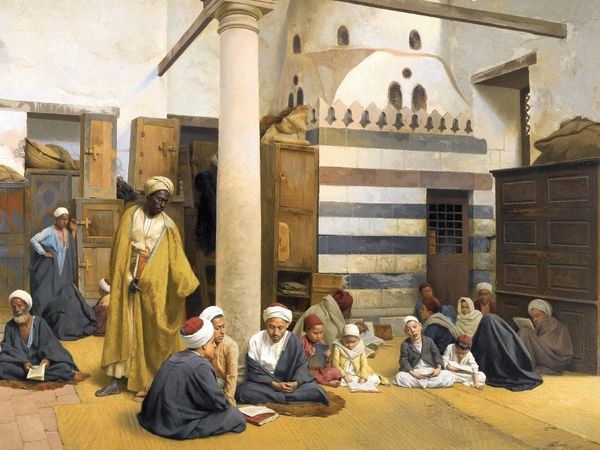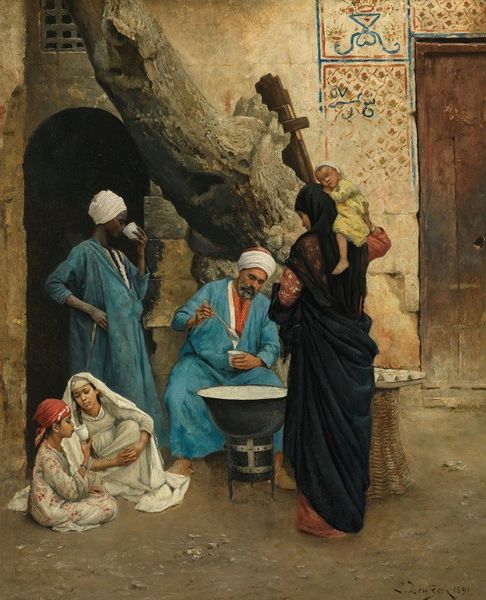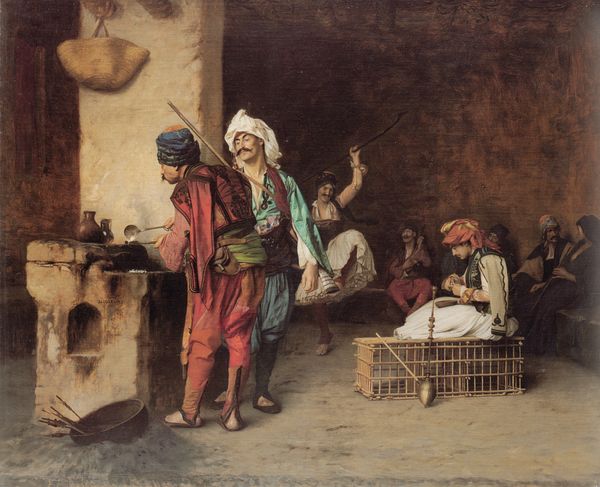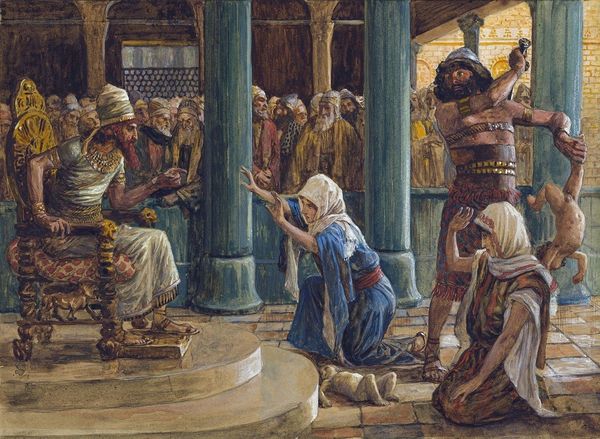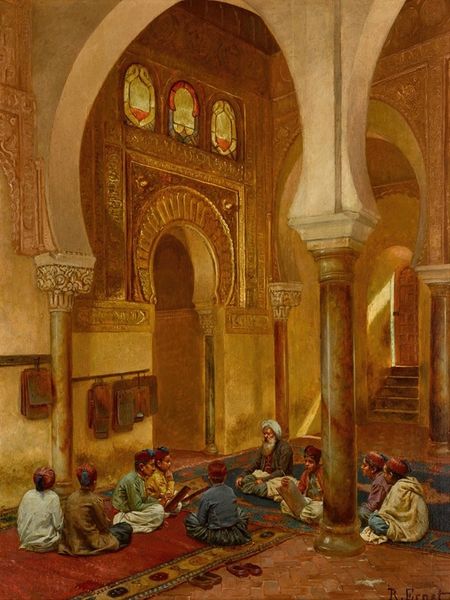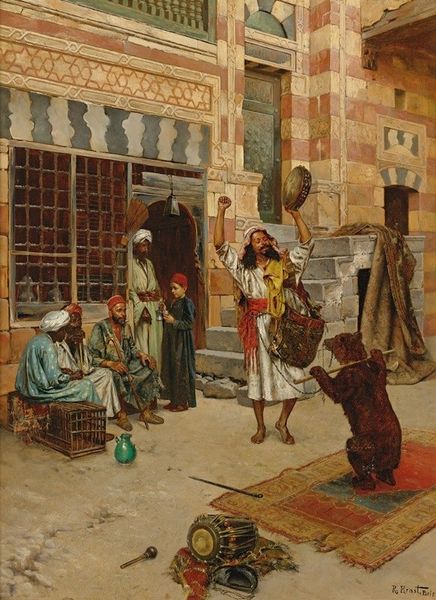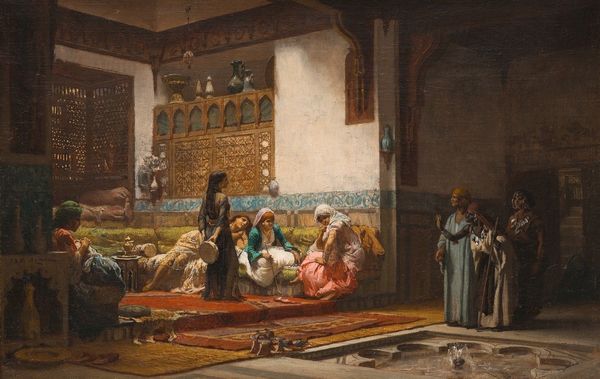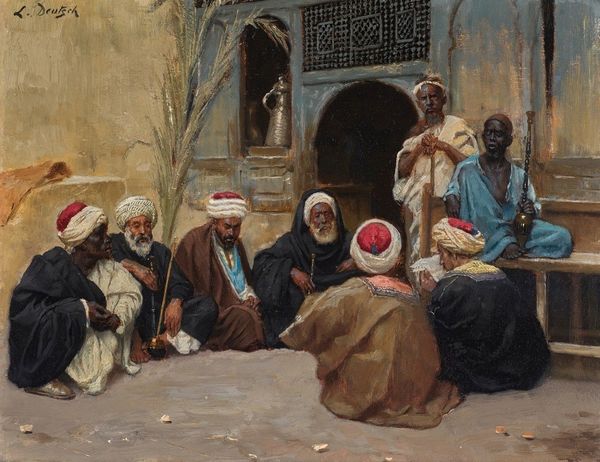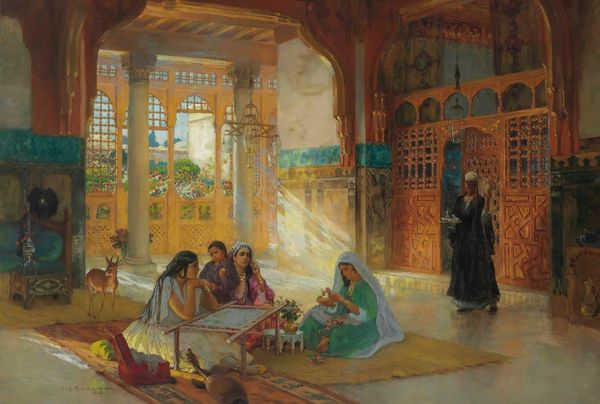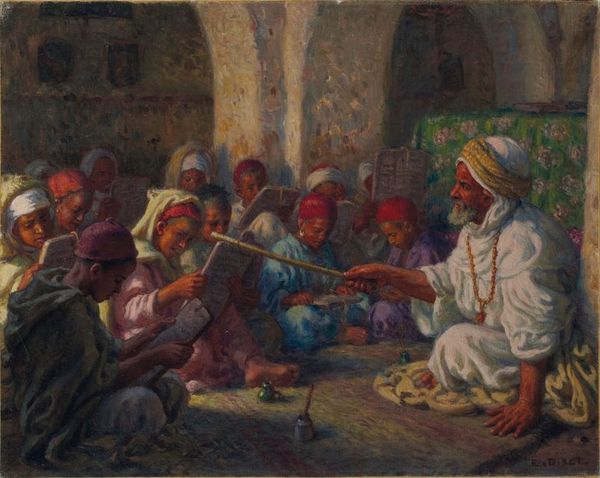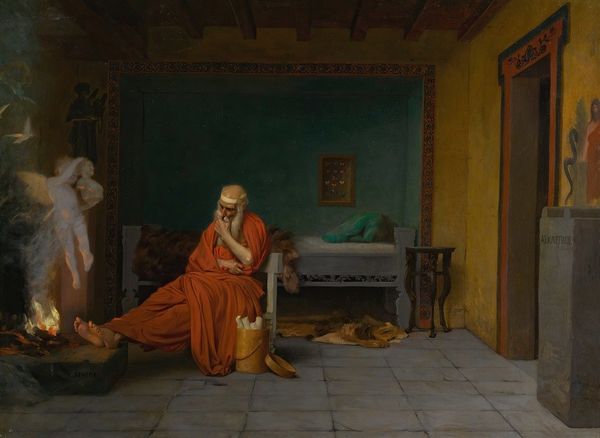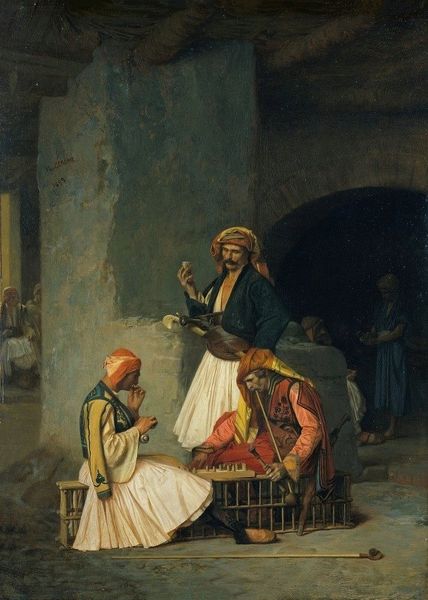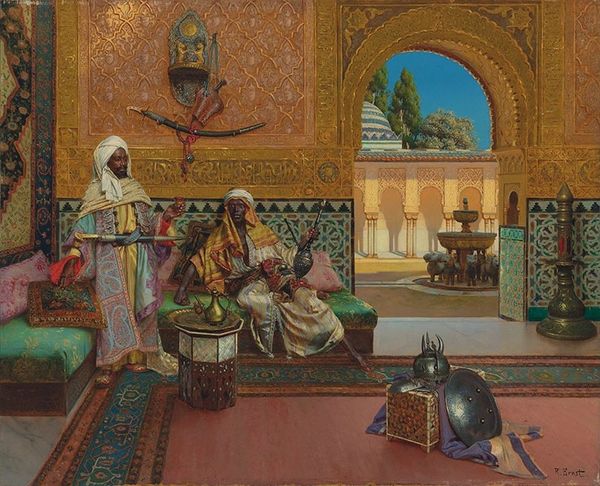
painting, oil-paint
#
narrative-art
#
painting
#
oil-paint
#
figuration
#
oil painting
#
orientalism
#
genre-painting
#
academic-art
#
realism
Copyright: Public domain
Editor: So, this is "The Snake Charmer," an oil painting by Jean-Léon Gérôme. It’s quite detailed, and the scene feels both intimate and performative, almost like a staged photograph. What do you see in this piece? Curator: I see a careful construction of orientalist fantasy. Note the setting: a crumbling, indeterminate Middle Eastern or North African locale. Consider the figures: are they individuals or types? Gérôme excels at crafting ethnographic detail, yet the scene remains firmly within a European imaginary. Editor: What makes you say that? Is it the romanticizing of the East? Curator: Precisely! The snake charmer is an immediately recognizable trope, loaded with exoticism. Observe how the audience is arranged - a tableau of apparent cultural authenticity, all rendered for a European audience hungry for a glimpse of the "mysterious East". Look at how their faces are depicted, what expressions or reactions is Gérôme communicating, and to what purpose? Editor: I see what you mean. It feels… reductive. Like he's capturing a spectacle, not a lived experience. Curator: Indeed. But consider the power of such images in shaping Western perceptions. This wasn't just art; it was cultural propaganda, solidifying notions of the “Orient” as both alluring and savage, a place of ancient secrets controlled only by individuals with mystical skill. It shaped cultural memory, building up stereotypes we are still grappling with today. What do you take away from our discussion? Editor: That beneath the realism, there is so much implied meaning, the lasting effect of how cultures represent each other and the gaze from one culture to another. Curator: Exactly. Understanding how images like these function helps us deconstruct similar portrayals in contemporary media.
Comments
No comments
Be the first to comment and join the conversation on the ultimate creative platform.
